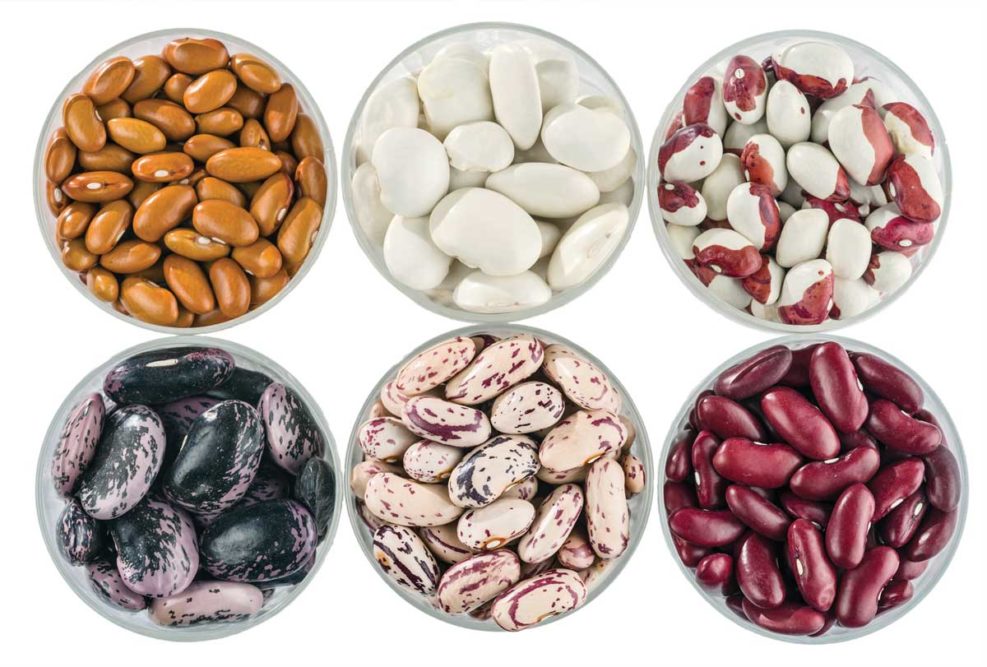Long before canned soup or packaged bread became pantry staples, people were stocking up on lentils and beans to make it through the week. Today, they’re still go-to ingredients for consumers around the globe, and more food companies are using them to create healthier snack alternatives.
Brands such as Scotts Valley, Calif.-based RW Garcia have added lentil crackers to its portfolio, while No Cow, Denver, has secured financial backing from Minneapolis-based General Mills and venture capitalist firms for its protein and energy bars that includes faba bean protein.
Before tapping into these pulses’ rising popularity, bakers and snack makers should take a closer look at possible applications and where they can be used to add health claims.
Lentils: savory agents
Available in yellow, red, green, brown and black varieties, lentils are often incorporated through a powder format. Like many other pulses, lentil ingredients may be used in a variety of bakery and snack products. However, they tend to work better in savory items, especially when used at higher inclusion levels.
“Lentil-based ingredients do have a noticeable flavor,” said Chris Thomas, project leader, technical service, Ingredion, Inc. “These ingredients lend themselves to savory bakery products, where they enhance the savory flavor notes. Lentil flours and protein concentrates can also be used in sweet goods where there are pronounced spice notes.”
They also are being used in a variety of snacks, such as crackers, chips and puffs. Janice Rueda, Ph.D., vice-president, nutrition science business development, ADM, explained that consumers who are looking to swap out traditional carbohydrate-heavy snacks turn to these products as a healthier way to satisfy cravings. For example, instead of using potatoes or corn, Harvest Snaps, a Calbee North America brand, Fairfield, Calif., uses lentils to create the tomato basil variety of its Red Lentil Snack Crisps that offer 3 grams of fiber and 5 grams of protein per 1-oz serving.
Lentils can be extruded at high rates but require the addition of corn, rice and other starch sources to aid expansion and decrease density.
Beans: a rising star
As consumers become more familiar with the benefits of beans and pulses through soups and hummus, they are starting to look for them in other products as well, Dr. Rueda said.
“Beans are high in both protein and fiber, as well as several important nutrients, such as iron and potassium, that consumers are looking to increase in their diets,” she noted. “Consumers are looking for products that are nutrient-dense, delicious and minimally processed. Whole food bean ingredients are the perfect solution to meeting these needs.”
Beans are found around the globe in a variety of sizes and colors and are available in flour and concentrate formats. This wide selection allows bakers to tap into specific types of beans to meet application needs. The USA Dry Pea and Lentil Council recommended using white bean or navy bean flour when developing neutral-flavored products such as vanilla cake or including black beans for brownies. Jennifer Tesch, chief marketing officer for Healthy Food Ingredients, added that bean flours can support clean label formulating goals while also boosting plant-based protein claims.
Many of this ingredient’s formulating challenges are similar to other pulses. Since beans are high in protein and fiber, extrusion can be challenging. In addition, bean flours absorb water and compete for hydration in dough systems. But these issues are easily overcome with only slight changes to processing protocols, Dr. Rueda explained, and shouldn’t negate from the pulse’s potential benefits.
“We see a huge opportunity for bean ingredients in this market segment, as consumers try to increase the diversity of their diets and look for whole food goodness that they can feel good about,” she remarked.
This article is an excerpt from the December 2019 issue of Baking & Snack. To read the entire feature on pulses, click here.





